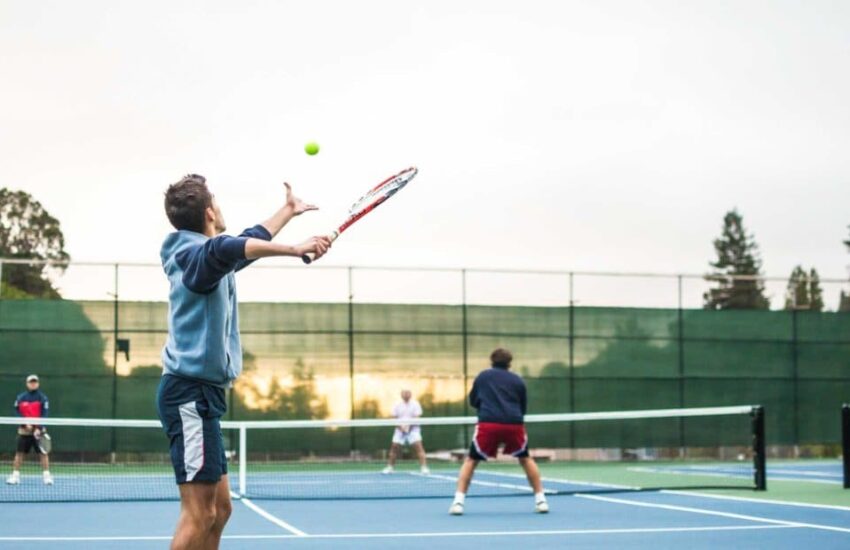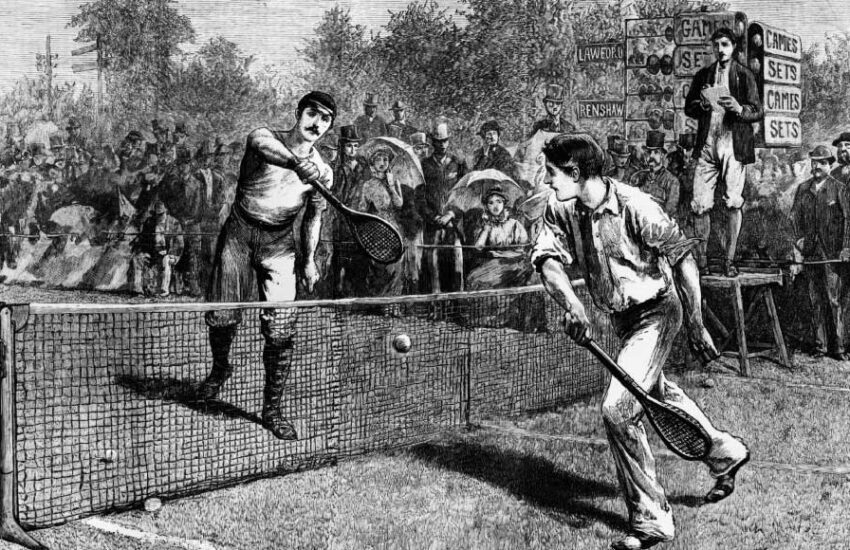Exploring the Four Primary Tennis Playing Surfaces
In this comprehensive guide, we delve into the diverse world of tennis playing surfaces. Understanding the different types of surfaces – grass, clay, hard, and artificial grass – is crucial for both players and enthusiasts, as each offers a unique playing experience.
Alt: a female tennis player on a professional tennis court
We explore their history, characteristics, and the influence they have on the style and outcome of a tennis match.
The Evolution and History of Tennis-Playing Surfaces
The genesis of tennis is veiled in the annals of history, with suggestions that its precursors might have been played by ancient Greeks, Romans, and Egyptians. The absence of concrete illustrations or detailed descriptions from these times leaves room for speculation. However, a linguistic trail offers intriguing clues. For instance, the contemporary word “racquet” might have originated from “rahat,” an Arabic term signifying the palm. Additionally, the sport’s name could be derived from “Tinnis,” a town in Egypt. These linguistic tidbits, though limited, hint at a long-lost connection to the early versions of tennis.
The documented lineage of tennis can be traced to France during the 11th or 12th centuries. Here, French monks were known to engage in a basic form of the sport, playing with their hands, striking balls against monastery walls or across ropes in courtyards. These primitive versions were the precursors to the tennis we know today, a sport that boasts over 87 million enthusiasts globally.
This article aims to shed light on the four primary types of surfaces integral to the sport, each offering unique challenges and influencing gameplay. These surfaces are prevalent in both local clubs and the high-stakes arena of professional ATP and WTA tournaments.
Diverse Playing Surfaces in Tennis
Across the globe, tennis venues feature four key types of playing surfaces: grass, clay, hard, and synthetic turf. Each of these surfaces impacts the dynamics of the game, influencing player performance and shaping their strategic approach.
Grass Courts: The Heritage and Challenge
The 18th century saw the emergence of tennis on grass, initially a pastime for the aristocracy on their estate lawns. This surface gained acclaim through Wimbledon, a venerable Grand Slam tournament initiated in 1877. Grass was the predominant surface in major competitions historically; for instance, the US Open was played on grass from its inception in 1895 until it transitioned to clay in 1975, and eventually to hard surfaces in 1978. The Australian Open followed a similar path, shifting from grass to hard surfaces in 1988.
Grass courts are renowned for their demanding upkeep, which involves meticulous seeding, watering, and trimming. The gameplay on grass is distinctive, characterized by a quick, low ball bounce that requires swift reflexes and adaptability from players. The natural wear from play can lead to irregular and unpredictable ball bounces, presenting a formidable challenge to competitors. Despite these hurdles, grass courts remain a distinguished aspect of tennis, continually testing the agility and skill of players.
Clay Courts: The Arena for Tactical Mastery
Clay courts, crafted from materials like shale, brick, or crushed stone, provide a unique experience in tennis. The ball’s slower pace and higher bounce on these surfaces favor prolonged exchanges, benefiting players who excel in baseline play and those adept in employing spin and sharp angles. The French Open, the sole Grand Slam event on clay courts, exemplifies the tactical play that these surfaces facilitate.
- Global Presence: Clay courts are more commonly found in Continental Europe and Latin America than in regions like North America, Asia-Pacific, or Britain;
- Varieties: The two principal forms of clay courts include the traditional red clay and the firmer green clay, often referred to as “rubico.”;
- Upkeep Requirements: Constructing clay courts may be more cost-effective than other types, but they require diligent maintenance, notably regular flattening, to ensure optimal play conditions.
Hard Courts: A Blend of Speed and Predictability
Constructed from robust materials with an acrylic top layer, hard courts offer a balance between velocity and consistent bounce. They are swifter than clay courts yet more predictable than grass. The speed on these courts can be modified by altering the sand content in the paint, allowing customization for different player preferences and tournament standards.
- Significance in Grand Slams: Hard courts have been the choice for the US Open since 1978 and the Australian Open since 1988;
- Maintenance and Versatility: These surfaces are the most low-maintenance among tennis courts and accommodate a wide array of playing styles, supporting both aggressive and defensive players.
Synthetic Grass Courts: Resilient and Consistent
Synthetic grass courts offer notable benefits, especially in terms of resilience to weather conditions. Their ability to dry quickly after rain and reduced slipperiness makes them suitable for areas with variable climates.
- Advantages: Quick drying post-rainfall minimizes play interruptions. The uniformity of the surface prevents the irregularities common on natural grass and clay. The consistency in the artificial grass’s thickness and texture ensures a steady playing field. Maintenance demands are lower compared to natural grass or clay courts.
Essential Equipment for Different Court Types
When playing on different surfaces, the right equipment can significantly enhance performance. Here’s what to consider for each type:
Grass Courts:
- Shoes with a flat sole for better grip;
- Low-bouncing, fast-moving balls suitable for the surface.
Clay Courts:
- Shoes with a herringbone pattern sole for traction;
- High-spin racquets to capitalize on the surface’s characteristics.
Hard Courts:
- Durable shoes with good cushioning;
- Medium-paced balls for a balanced game.
Artificial Grass Courts:
- Shoes with good lateral support;
- Balls with standard bounce and speed.
The Importance of Surface Adaptation in Tennis Strategy
Adapting your game to different surfaces is crucial in tennis. Each surface demands specific strategies and skills:
- Grass Courts: Focus on serve and volley techniques;
- Clay Courts: Build endurance and work on spin-heavy shots;
- Hard Courts: Develop a versatile game plan with a mix of power and finesse;
- Artificial Grass: Practice quick reflexes and accurate serves.
Mastering these adaptations can significantly enhance your performance.
Conclusion
From the historical roots of tennis on grass courts to the modern-day adaptations on clay, hard, and artificial surfaces, each type of playing field offers unique challenges and opportunities. Understanding the nuances of these surfaces is essential for players and enthusiasts alike, as it influences strategies, equipment choices, and overall gameplay.
Whether you’re a beginner at Mountlake Terrace or a seasoned player, adapting to different surfaces is a journey that enhances your skill and appreciation for this dynamic sport. This exploration of tennis court surfaces not only enriches our understanding of the game but also connects us to its rich history and evolving nature.


